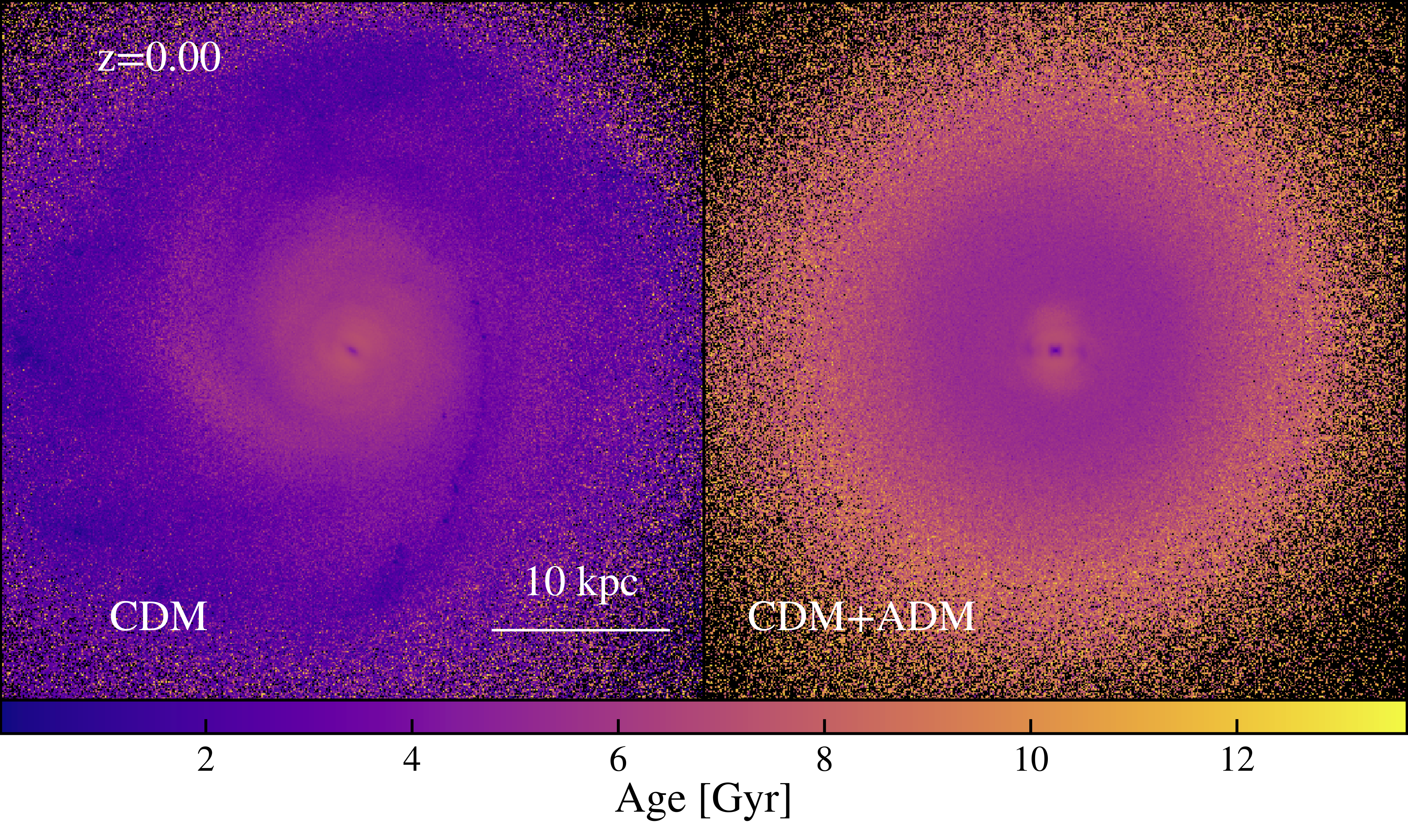I use simulations to study galaxies and how their properties are influenced by their environment. I study galaxies and clusters in the IllustrisTNG simulations and run zoom-in simulations of individual halos using both the TNG and FIRE models.
Roughly 85% of matter and 30% of the total energy budget in the Universe is dark matter. The standard model for dark matter is cold dark matter, in which dark matter particles interact with each other and with baryonic matter only through gravity. While this model reproduces large-scale structure, there are still several discrepencies with small-scale observations. However, we have yet to detect any predicted dark matter particles. With data from telescopes like Gaia and upcoming telescopes like Roman, we can better probe small-scale structure, which is an excellent test-bed for dark matter models.
Self-interacting dark matter

Surface densities of two halos using the same initial conditions but different dark matter models (cold dark matter on the left and self-interacting dark matter on the right).
I run zoom-in simulations of Milky Way-like halos with alternative dark matter halos. In these simulations, dark matter particles have a ground and excited state. While they still interact with baryons only through gravity, the particles can scatter with each other elastic or inelastically with velocity-dependent cross sections. In elastic scattering, dark matter particles scatter and change their direction of travel without changing energies. This adds a pressure to the dark matter and changes its behavior on small scales. In inelastic scattering, two ground state particles or two excited state particles scatter and change states. The energy difference in changing states turns into kinetic energy, which alters the velocity distribution of dark matter particles which in turn alters the spatial distribution of their orbits. My simulations show how halo properties, like core density or satellite distrubtion, are affected by these interactions.
Atomic dark matter

The average stellar age at each position within the galactic disk for a simulation with only CDM (left) and a simulation including ADM (right). The spiral arms are more evident in the CDM-only simulation compared to an older population on the outskirts of the ADM simulation.
Atomic dark matter is a model that mirrors Standard Model hydrogen. In this model, there is a dark proton and electron that can form a dark gas. This gas can cool like ordinary hydrogen, so it's possible to form dark "clumps", which are analogous to stars without fusion. This has potential ramifications for the structure of the galactic disk. As with SIDM, the ADM only interacts with ordinary matter through gravity. Using the FIRE galaxy formation model, I am running zoom-in simulations of Milky Way-mass halos. With these, I am studying changes to the stellar population within the disk to identify observable signatures of these types of dark matter interactions. I am also working with collaborators to study the effects of this matter on stellar streams and satellite galaxies.